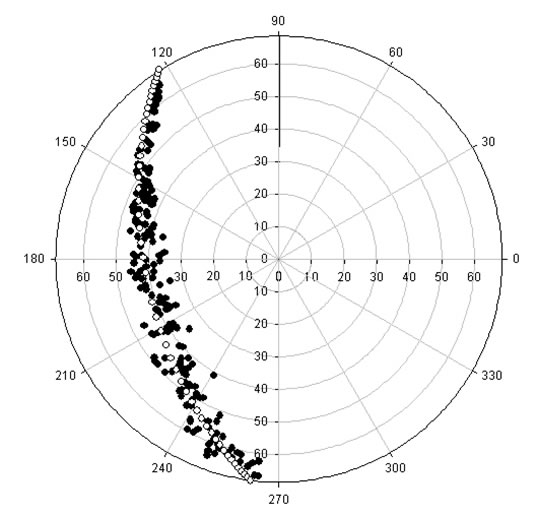Meteor Radar Observations
Introduction (2 of 2)
This specular scattering condition implies that meteors coming from a particular direction (a single radiant) will only be detected by the radar if they occur in a plane that has the radiant direction as the normal to the plane. When this echo plane constraint is combined with the ablation height of typical meteors (80 - 110 km), ther intersection of the two produces an echo surface, where all radar meteor echoes from one radiant must occur as seen from the main radar site.

As seen from the main radar site, all meteors from a single meteor shower (having one radiant) will lie on this great circle. An example, shown below, for the Geminids, shows all echos from the shower detected over a one hour interval as a function of echo arrival azimuth (polar coordinate) and zenith distance (radial coordinate). Here black dots show measured echo locations and open circles are theoretical echo line based on assumed radiant location and single height of ablation. Details of how this specular condition can be used to compute effective radar collecting areas can be found here.




